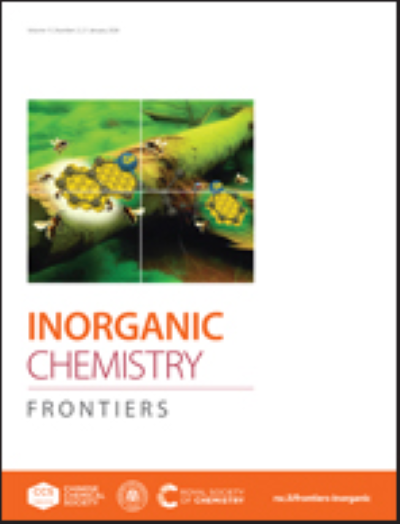Boosting the growth kinetics of extra-large pore zeolite ZEO-1
IF 6.4
1区 化学
Q1 CHEMISTRY, INORGANIC & NUCLEAR
引用次数: 0
Abstract
The first stable aluminosilicate zeolite with extra-large pores, ZEO-1, marks the great breakthrough in zeolite community after decades of exploration and endeavors, opening possibilities for processing bulky substrates. However, the long synthesis cycle and relatively low reproducibility hinders the wide application of this intriguing material. Here, we report the synthesis of ZEO-1 zeolite using a tentatively so-called “deficient fluoride approach”, i.e., a small amount of fluoride sources was introduced to the gel rendering the stoichiometrically unbalanced charge of the cation and anion from the OSDA and fluoride sources. Using this approach, faster crystallization and higher reproducibility of ZEO-1 zeolite were achieved compared to the originally reported protocol. The physicochemical properties of the obtained products were analyzed using comprehensive characterizations, including PXRD, SEM, TEM, ICP-OES, TG, MAS NMR, FTIR, etc. The crystallization kinetics of ZEO-1 were performed by following up and characterizing the extracted products obtained at different temporal stages. The plausible role of fluoride in boosting the crystallization of ZEO-1 zeolite was discussed. The catalytic performance of alkylation of phenol with tert-butanol was evaluated and compared with other large and extra-large pore zeolites.提高超大孔径沸石ZEO-1的生长动力学
经过几十年的探索和努力,第一种稳定的超大孔隙铝硅酸盐沸石ZEO-1标志着沸石界的巨大突破,为处理大块基质开辟了可能性。然而,较长的合成周期和相对较低的重现性阻碍了这种有趣材料的广泛应用。在这里,我们报道了采用一种暂定的“缺氟方法”合成ZEO-1沸石的方法,即在凝胶中加入少量的氟源,使OSDA和氟源的阳离子和阴离子的化学计量不平衡。与最初报道的方案相比,使用该方法可以实现ZEO-1沸石的更快结晶和更高的重现性。采用PXRD、SEM、TEM、ICP-OES、TG、MAS NMR、FTIR等综合表征手段对所得产物的理化性质进行了分析。通过对萃取产物在不同时间阶段的跟踪和表征,研究了ZEO-1的结晶动力学。讨论了氟化物在促进ZEO-1沸石结晶中的可能作用。评价了苯酚与叔丁醇烷基化反应的催化性能,并与其他大孔和特大孔沸石进行了比较。
本文章由计算机程序翻译,如有差异,请以英文原文为准。
求助全文
约1分钟内获得全文
求助全文
来源期刊

Inorganic Chemistry Frontiers
CHEMISTRY, INORGANIC & NUCLEAR-
CiteScore
10.40
自引率
7.10%
发文量
587
审稿时长
1.2 months
期刊介绍:
The international, high quality journal for interdisciplinary research between inorganic chemistry and related subjects
 求助内容:
求助内容: 应助结果提醒方式:
应助结果提醒方式:


